4.1 Justification of the selection of data sources
Page last updated: September 2016
Information Requests
- Present and assess available data sources. For commissioned data, describe the information gap that required commissioned analysis (Subsection 4.1.1)
- Summarise background information in the relevant spreadsheet of the Excel workbook (Subsection 4.1.2)
4.1.1 Available data sources
Data sources fall under the broad headings listed in Table 4.1.1; however, there might be other suitable data sources (see Sources of data for use in generating utilisation estimates).
The main sources of relevant data for the market-share approach are the PBS data, including those supplied by Services Australia and data for under-copayment use of PBS-listed medicines by general beneficiaries, which can be estimated from several sources.
|
Data type |
Examples |
|---|---|
|
Disease or condition epidemiological data (provide estimates of prevalence or incidence in the population) |
|
|
Pharmacoepidemiological data (provide estimates of treated prevalence) |
|
|
Market data |
|
|
Commissioned data |
|
MBS = Medicare Benefits Schedule; PBS = Pharmaceutical Benefits Scheme; RPBS = Repatriation Pharmaceutical Benefits Scheme
Different sources of data may be required. In Subsection 4.1:
- describe the data and data source
- explain the purpose of the data in the analysis
- describe how the data are relevant to the present Australian setting. Where data on overseas markets are provided, clearly state that Australian data were not available and discuss the applicability of these data to the Australian setting (with particular reference to the subsidy arrangements in the overseas jurisdiction)
- where there are multiple sources of data, discuss the concordance across these sources and present sensitivity analyses for the different estimates across the sources
- for each estimate derived from source data, summarise the methods, and discuss any assumptions, limitations and biases in the approach taken.
Commissioned data
A commissioned study may be used to fill a gap in the data, and may include medicine usage surveys; data from disease or condition registries; or dispensing and medical service claims. Clearly state the original purpose for the collection (eg the data were collected for the primary purpose of understanding treatment choices, or this was an analysis of dispensing claims collected for the primary purpose of administering the PBS). When reporting the results of commissioned data, provide sufficient background and methodological information to adequately interpret the results.
See Appendix 1 for further guidance on presenting commission data from a survey of experts. Provide the method for identifying respondents, the reasons for collecting information, and any potential conflicts of interest of the respondents or the company undertaking the survey. Present the actual questions asked and the range of responses. Where the respondents are experts in treating specific diseases, provide an estimate of the number of patients they treat, what proportion this is of the expected numbers of patients in Australia, and the health area and setting in which the respondents practise (eg public hospital, private hospital, community, regional area, inner urban area).
When analysing administrative data and registries, provide sufficient information about the method used to sample the dataset, the proportion of the affected population included in the dataset, rules for analysis, assumptions used (particularly where elements in the dataset are used as surrogates) and statistical methods (such as censoring or use of propensity scores).
4.1.2 Summary of background information
Summarise the data sources, background information, primary (not calculated) variables and assumptions in the relevant spreadsheet(s) of the Excel workbook.


